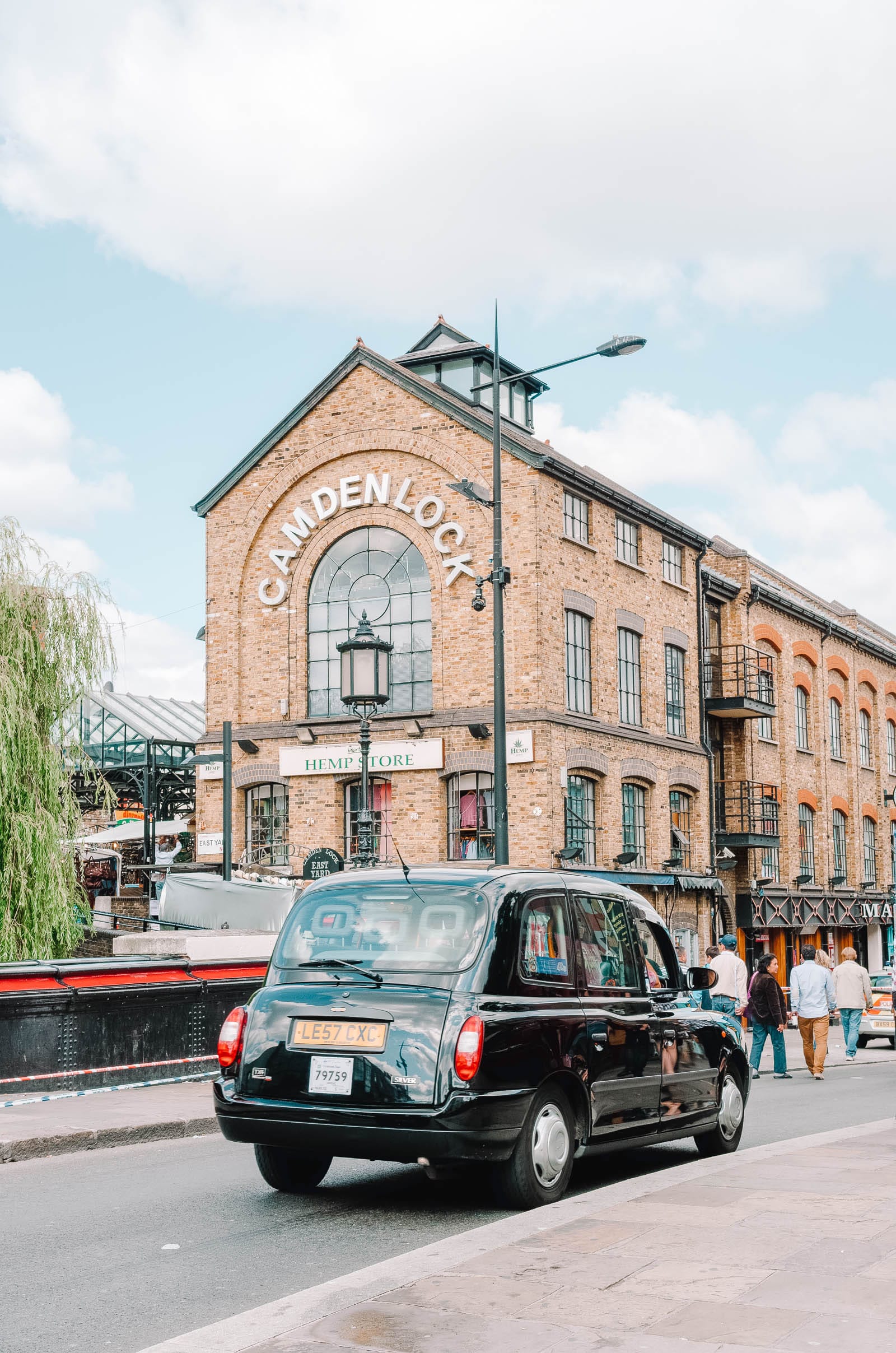Summary of Asia Travel Planning:
Wondering where to begin planning your Asia travel? Taking a big trip to the other side of the planet can seem daunting — especially for the first-timer — but it doesn’t have to be! This step-by-step guide will take you from the U.S. to Asia with ease so that you can focus on the most important aspect of travel planning: the fun!
Traveling to Asia is as exciting as it sounds; Asia is the largest and most diverse continent on Earth, so you’ll get more than your money’s worth of culture, beauty, history, and adventure.
With a long to-do list, this Asia travel guide will help you to take care of items in the right order, so that you can be ready for the big departure day.
First, read about 10 newbie mistakes to avoid when you begin your travels!
01 of 07: Apply for a Passport

Long before you start worrying over what to pack or where to go, you should start the most time-consuming processes first. Asia travel is completely impossible without a passport, and as a good world citizen you should be proud to have one anyway!
The easiest way to apply for a U.S. passport is to do so at your main post office. Passport photos have strict guidelines; plan to have one taken at the post office or by a professional rather than risk having your application rejected.
Before heading to the post office, go to the official U.S. passport site to print your application and to see requirements. You will need an official birth certificate that lists both of your parent’s full names. A valid driver’s license is a big help for proving your citizenship.
People that have held passports before may be able to apply by mail. If you are leaving in less than two weeks, you can expedite the process by going in person to one of the U.S. passport agencies dotted around the country.
Losing or damaging your passport is a major taboo; treat it as a sacred object when it arrives!
02 of 07: Visit a Travel Clinic

Perhaps even more time consuming than applying for a passport, you will want some basic vaccinations for your Asia travel. Some vaccinations such as those for hepatitis require a series of shots spread across months to complete immunity. If short on time, you can get the first two injections before your trip, then get the third booster after you return home. Luckily, tetanus vaccinations are good for 10 years and the hepatitis vaccinations are considered to be good for at least 20 years, maybe life.
You may not need the full gamut of shots for Asia if you are only planning a short visit, or intend to stick around only tourist areas. Keep good records of your vaccinations to avoid overpaying for duplicates later; remembering what shots you did or did not receive 10 years later is not easy!
Ask your travel doctor about the following vaccinations; all are just as useful at home as they are abroad:
- Hepatitis A and B
- Measles (you probably received this one as a child, but check to be sure)
- Tetanus / Diphtheria (often combined in one injection)
- Typhoid (available in capsules / necessary only outside of large tourist areas)
Vaccinations for rabies and Japanese encephalitis are only necessary in special circumstances. Yellow fever is not a problem in Asia.
The CDC travel website has the most up-to-date information for Asia travel vaccinations.
03 of 07: Apply for Travel Visas

Perhaps one of the most bewildering and confusing aspects of Asia travel, applying for visas stumps a lot of first-time travelers.
A travel visa is a stamp or sticker placed in your passport which allows access into a new country. Some are free, some have an application fee, some can be obtained in the airport at your destination, and some must be obtained before you get to a country! What’s worse, visa requirements for different countries are always changing, depending on the whim of bureaucrats.
You will either need to visit a country’s embassy to apply for a visa before you leave home, or mail your passport to them. If you mail your passport, don’t skimp on the postage! Use certified mail with tracking and delivery confirmation; mail your passport directly from the post office rather than dropping it into a mailbox.
Countries such as China, Vietnam, Myanmar, India, and a few others require that you arrive with a visa already in your passport; otherwise, you could be denied entry and put back on a plane! Countries such as Thailand allow exemptions if you just show up, however, you can get up to 60 days if you apply in advance before you arrive.
When researching visas, get the latest requirements directly from the consulate website rather than trusting other information sources that may or may not be up to date with new requirements.
Note: Many countries that claim to have an “onward ticket” requirement rarely actually enforce it. Travelers commonly fly into countries such as Thailand, then travel overland by bus or train to neighboring countries. Dressing nicely, explaining your travel plans, or showing adequate proof of funds is often enough to avoid the onward ticket requirement.
04 of 07: Book a Flight to Asia

Ask every passenger on a plane what they paid for their airfare and you’ll probably receive a different answer from each one! Getting a good price on a ticket to Asia is akin to playing the stock market lately: more a dark art than a science, and a lot of luck is required.
Purchasing your ticket too far in advance isn’t always the best way to ensure a good price. Try to buy your ticket 30 — 60 days before your trip; you’ll save money by being more flexible with your departure date and airports.
Some quick tips for booking your flight:
- Asia is a long flight away — sign up for a mileage reward program to take advantage.
- Leave from a major hub city; the best deals to Asia are often Asian-based airlines flying to and from the west coast of the U.S.
- Decline additional travel insurance, your regular travel insurance will probably have coverage.
05 of 07: Get Travel Insurance for Asia

Travel insurance may seem like just another expense added to a long list of Asia travel expenditures, however, once you take a hair-raising tuk-tuk ride through Bangkok at rush hour, you’ll realize that the peace of mind was worth the price!
Fortunately, travel insurance is far less expensive than regular health insurance. Follow these tips before choosing a suitable policy:
- Check your renter’s or home owner’s insurance to see if they will cover valuables such as camera and laptop while you are abroad.
- Make copies of receipts and record models/serial numbers for expensive electronics that you plan to take to Asia.
- Choose a travel insurance policy that offers emergency evacuation back to the U.S.
- Realize that many travel insurance policies may require an additional “rider” to cover you during adventure sports such as scuba diving. Driving motorbikes is almost never covered.
- Travel Guard (Compare Prices) is the leading travel insurer in the U.S.
06 of 07: Plan Your Asia Travel

Now that all the prerequisites for Asia travel are done, time for the fun part: planning your trip!
The most common mistake that a first-time traveler to Asia makes is trying to see too much in too short of a time. With such interesting cities, beaches, and UNESCO World Heritage Sites in Asia, we are all guilty!
Keep in mind that things move a little slower in developing countries than they do at home; transportation may or may not go on schedule. Arriving in Asia with an aggressive itinerary is a sure recipe for stress.
Here are some tips for planning your Asia travel:
- Check the Weather: Many parts of Asia have distinct wet and dry seasons. An island is no fun when monsoon rains keep you indoors most of the time! Research monsoon season dates for your destinations, however, keep in mind that the world’s weather has changed and isn’t as predictable as it once was.
- Check Festival Dates: Big holidays and events such as Ramadan or Chinese New Year will certainly affect your trip to Asia. Accommodation prices during large holidays go up and transportation may be limited. Arrive early if you wish to enjoy the festivals in Asia.
- Don’t Worry About Language: While knowing how to say hello in Asia is certainly fun and useful, language differences should not be a concern when planning your trip. You will find English spoken to some degree nearly everywhere, particularly along popular routes. Learn some of the local language will certainly enhance your trip to Asia, however, you will learn exponentially faster once you hit the ground.
07 of 07: Arrive Prepared

Although so much trip preparation can seem a little overwhelming at first, remember: flexibility always outweighs extreme preparation in the long run!
Some last minute things to research and take care of before you leave home for Asia:
- You will undoubtedly be a little jet lagged your first days in Asia. Know these jet lag remedies.
- Know how to beat the top 5 travel health ailments that affect many travelers.
- Walk softly and don’t support harmful practices you may or may not realize; read about responsible travel in Asia.
- Research the currency exchange for your destinations before you leave home. Learn how to access and carry money in Asia and get the current exchange rates for Asia.
- Pack light — you’ll inevitably want to take advantage of the cheap shopping in Asia. Consider bringing these essential items with you to Asia.
- Know about these common scams in Asia so that you don’t become a victim as soon as you hit the ground.
- Register your trip on the U.S. State Department Travel website; the consulate will know that you are there in case of natural disaster or political turmoil.
- Contact your bank and any credit cards that you intend to carry on your trip; they need to be aware that you are traveling, otherwise they may lock your card to protect against fraud when they see strange charges in Asia come across!
- If traveling for a long time, fill your cars with gas and add fuel stabilizer to the tank.
Most importantly, enjoy your trip of a lifetime!




